Bombs, Baths and Bauhaus. Sounds like a freakish title for a murder mystery, doesn’t it? Welcome to the history of Villeroy & Boch, a renowned manufacturer of tableware and “ceramic sanitary ware”, courtesy of Replacements.com.
Curiously, prior to founding Villeroy & Boch in 1748, Francois Boch produced bombs for France and the Holy Roman Empire. Hmmm – I’m having trouble following the career progression… Suffice to say that Francois sustained a number of injuries in his previous line of work (!!!) and turned to producing porcelain instead (??!!). Well, thank heaven he did, because they developed some incredibly beautiful patterns, including “1900” with its border of wisteria and central figures of ladies in garb of the Art Deco period.
I won’t completely steal Replacements’ thunder, because they’ve done an excellent job in setting out the history of the company. I’ll just mention that also manufacture high quality sinks, toilets and bathtubs, among other “ceramic sanitary ware”, endured many upheavals with several wars, ever-changing borders between France and Germany, Nazi occupation, and being bombed themselves – almost out of business – but strong leadership and a seemingly iron determination kept the company going through thick and thin.
Between the wars, they embraced the culture of Bauhaus, whose school of thought forged a marriage of the aesthetically pleasing with master craftsmanship, evident in Villeroy & Boch’s designs. I’ve had a lovely time delving into Replacement’s pattern page and have identified several desirable acquisitions :).
On to the table! I found this pattern scouting around for Comedia del Arte designs one day on eBay. There are six different ladies featured on the plates.
In styling the table, I was drawn to the wisteria surrounding the rim of the plates, and went with different tones of purple to reflect it.
Purple placemats from HomeGoods is the darkest shade,
and the delicate violet shade of the Venetian goblets and
open salts is probably the lightest.
Alstroemeria, stock and pale pink wax flowers in simple lilac tumblers made wispy, wildflowerish bouquets to reflect the form of the wisteria on the plates.
The 1900 salad plates themselves have a creamy tone, so I paired them with raised-paste, cream-on-cream, shell-edged Wedgwood dinner plates, (an eBay find, also available at Replacements). That particular pattern was produced from 1930 right through to 1989, and I don’t know the actual age of the plates I have. They’re in excellent condition though, whatever their age, and I conclude that they weren’t used much by their former owners.
The plain white washed-linen napkins and runner are from Williams Sonoma several years ago. The casual, slighlty crumpled nature of the linen suited the casual vibe of the table.
Hammered stainless flatware from World Market picked up the texture in the placemats. I notice it’s not very well rated on the site, and have no idea why. It’s lovely, heavy and very attractive. Odd…
The stainless steel, twisted wire “nest” napkin rings have an uncluttered look, and also pick up on the woven texture of the placemats. (I think I got my napkin rings from Ballard Designs, but I’ve included a link to a set on Amazon.)
My friend Kathi Garner commented that this table would be perfect for a ladies’ lunch, and I have to agree.
It would be a hoot to host a costume lunch from the Art Deco period. Wouldn’t you love to swan around in one of these outfits?
This one, perhaps?
This one looks a lot more comfortable! Favourites, anyone?
I’m sharing this post with Between Naps on the Porch and Wow us Wednesdays.

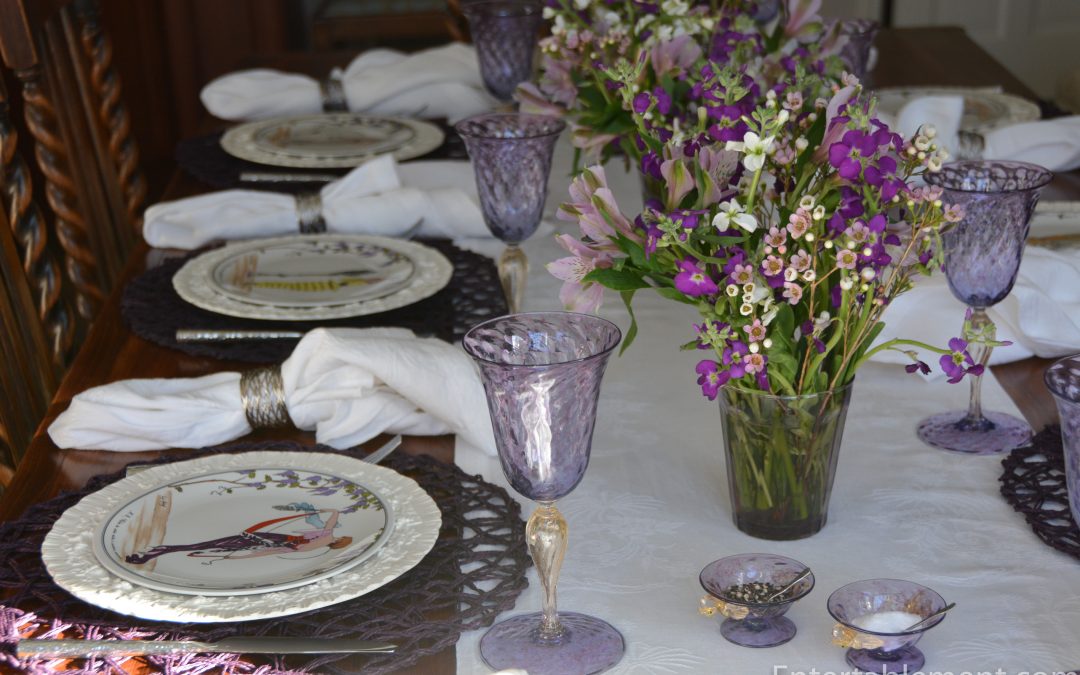
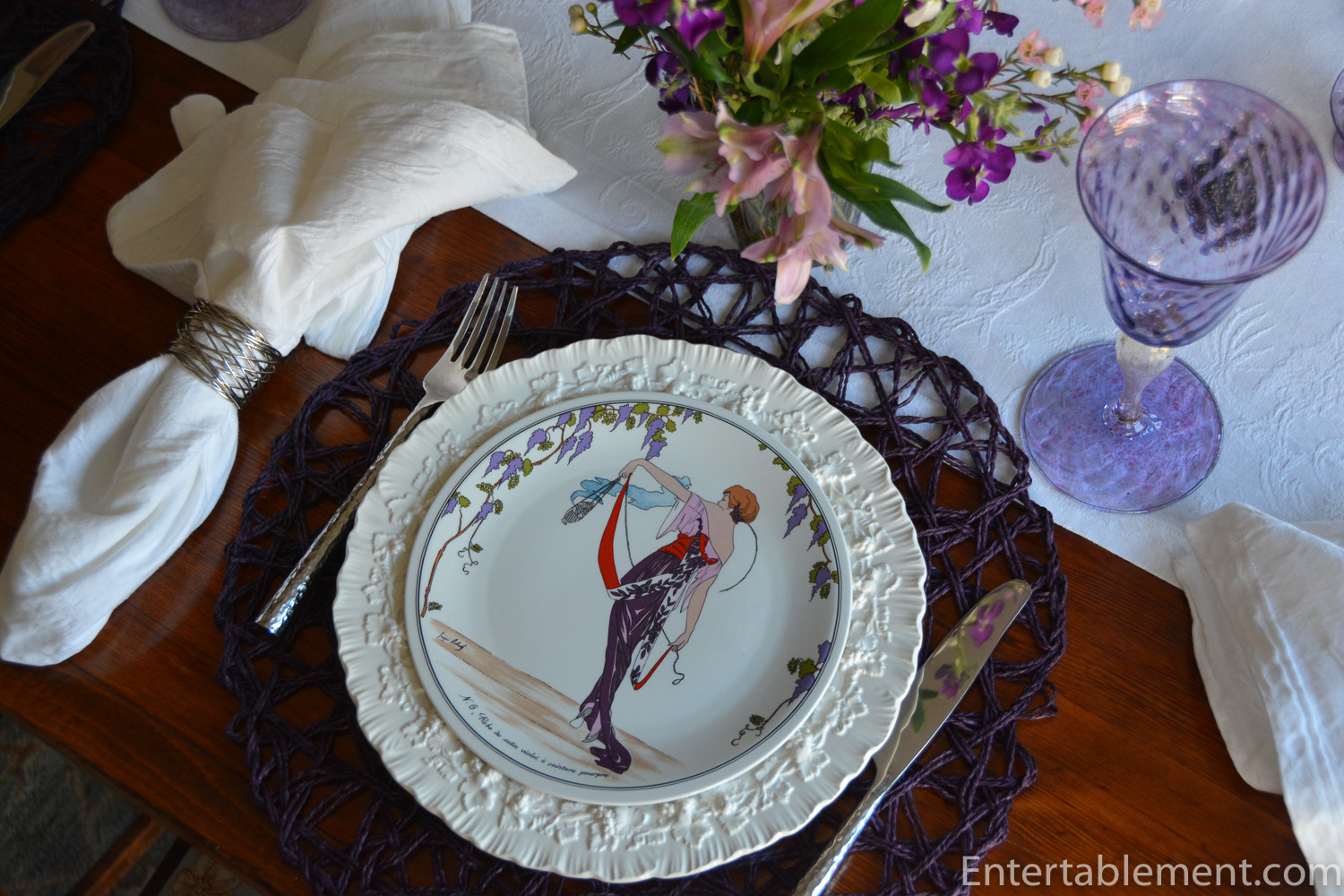

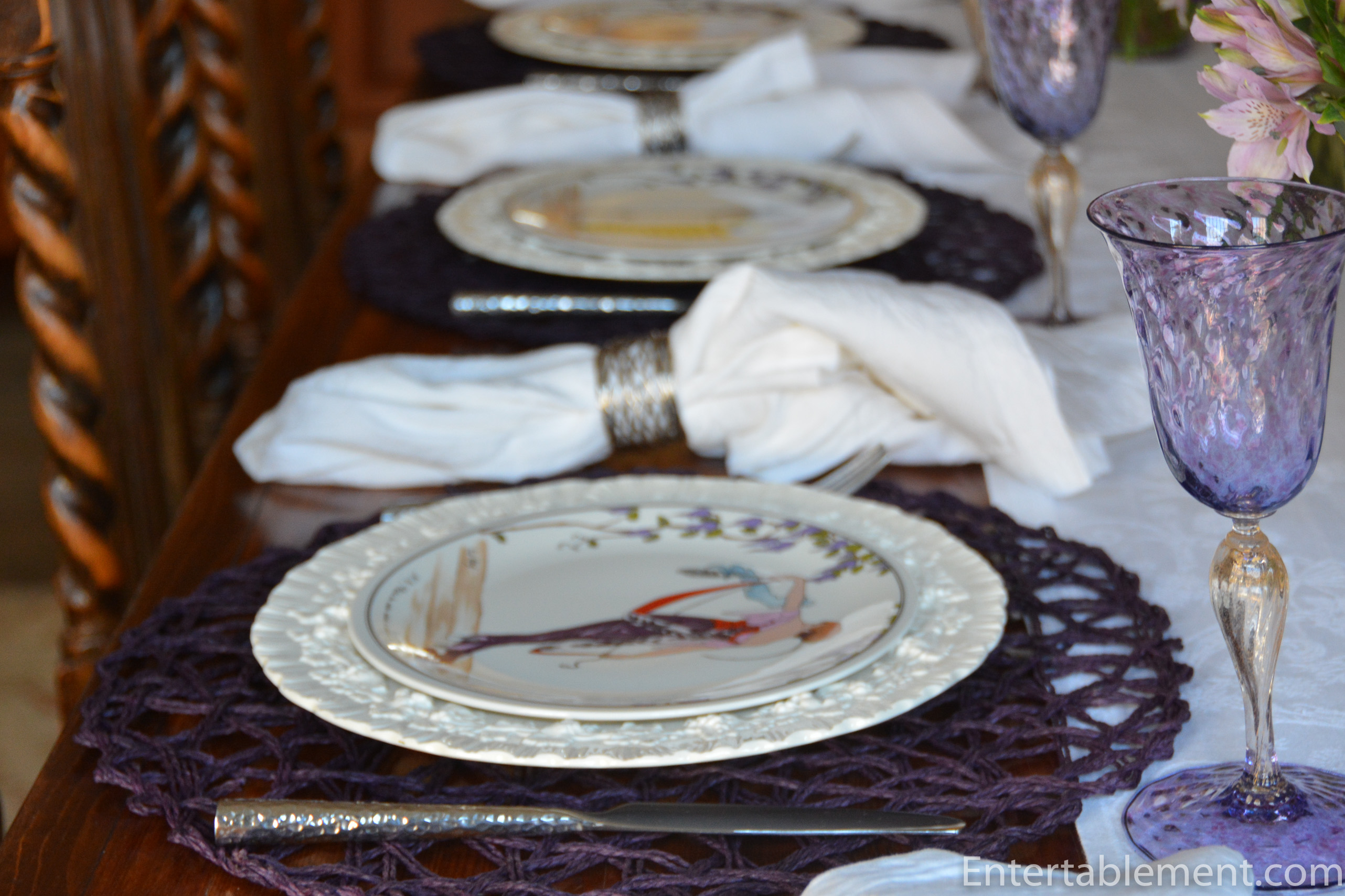
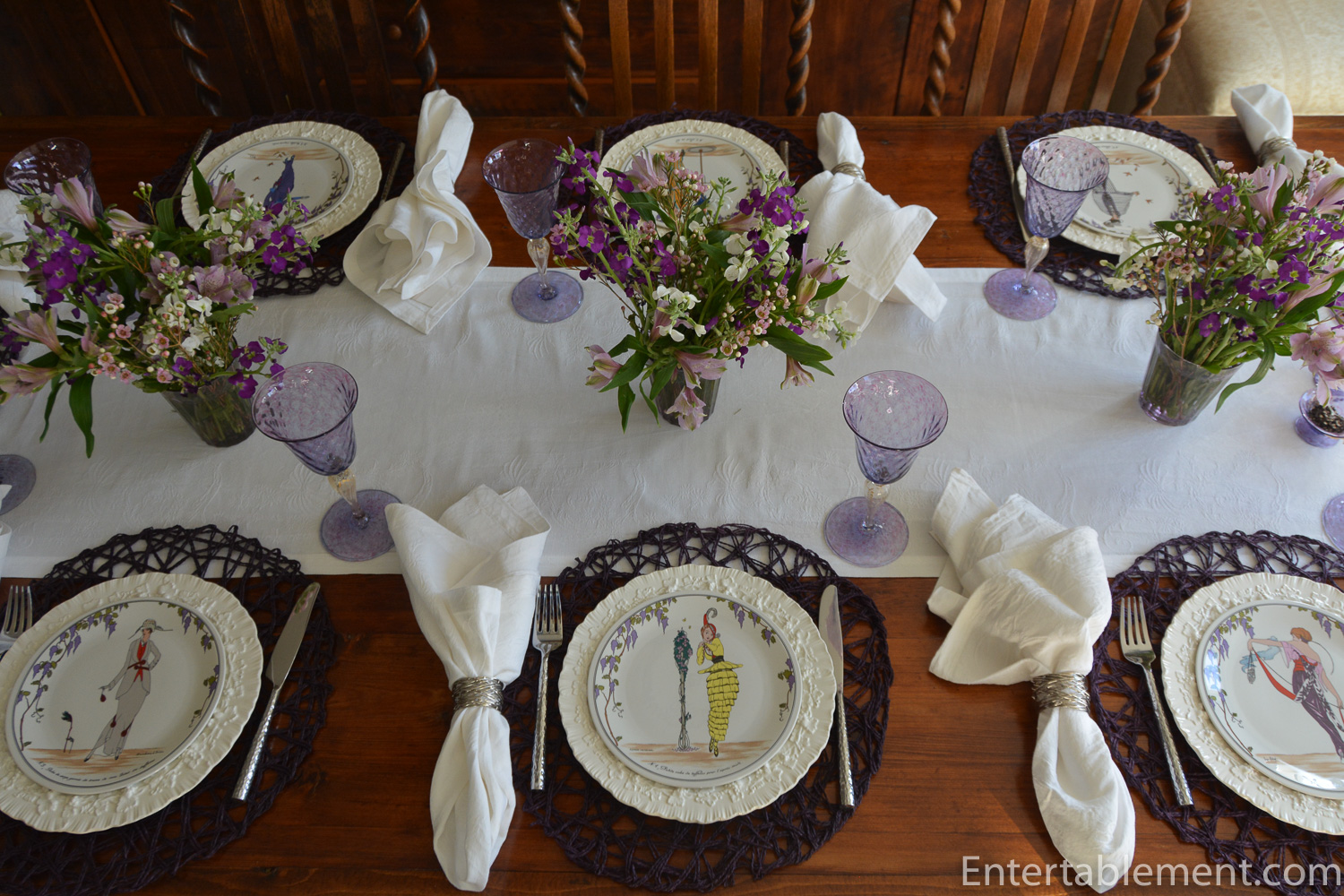

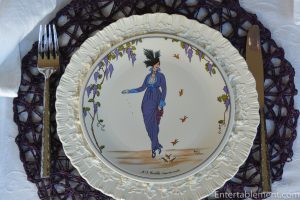
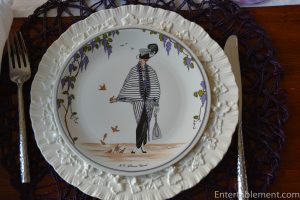


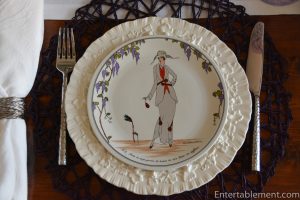
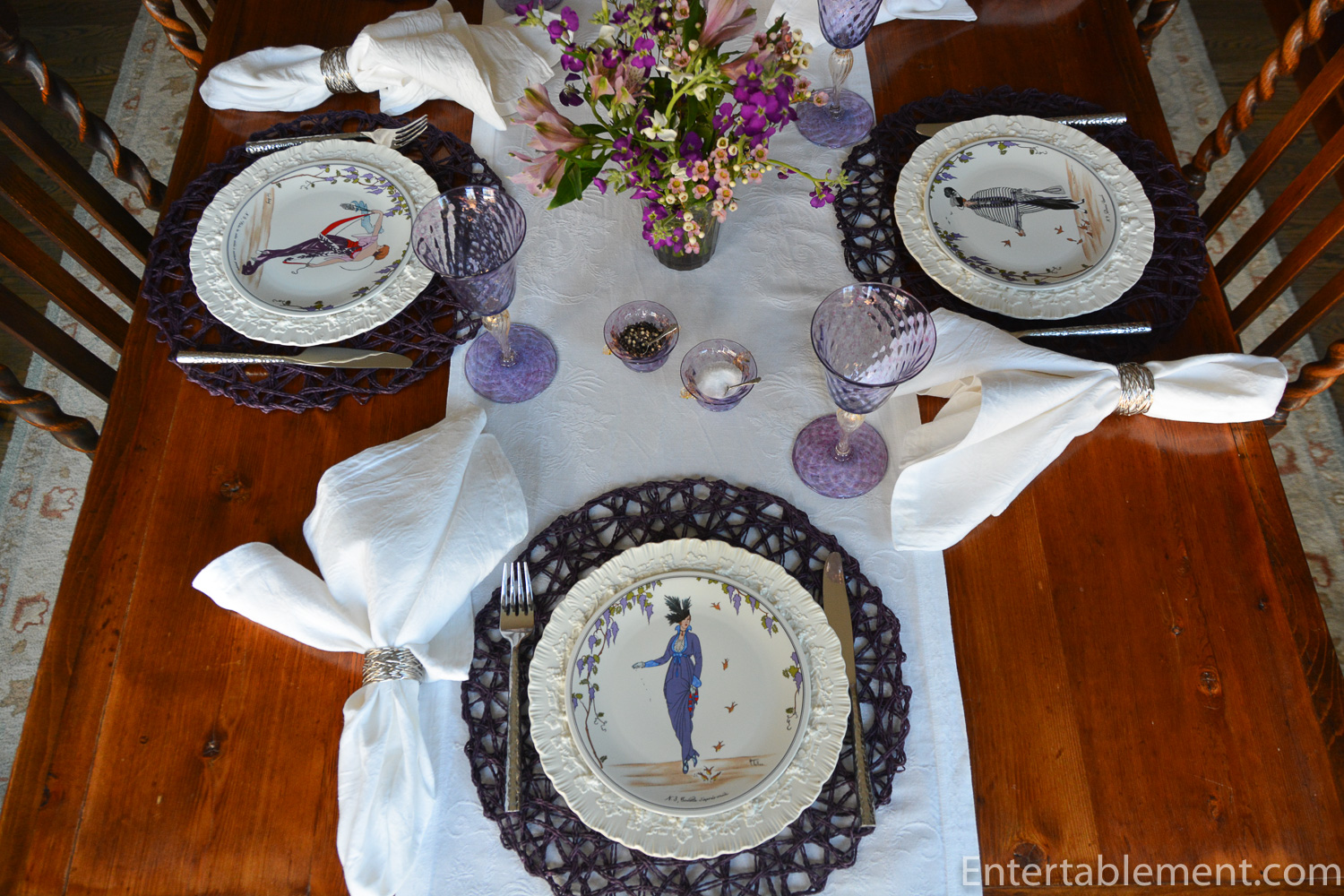
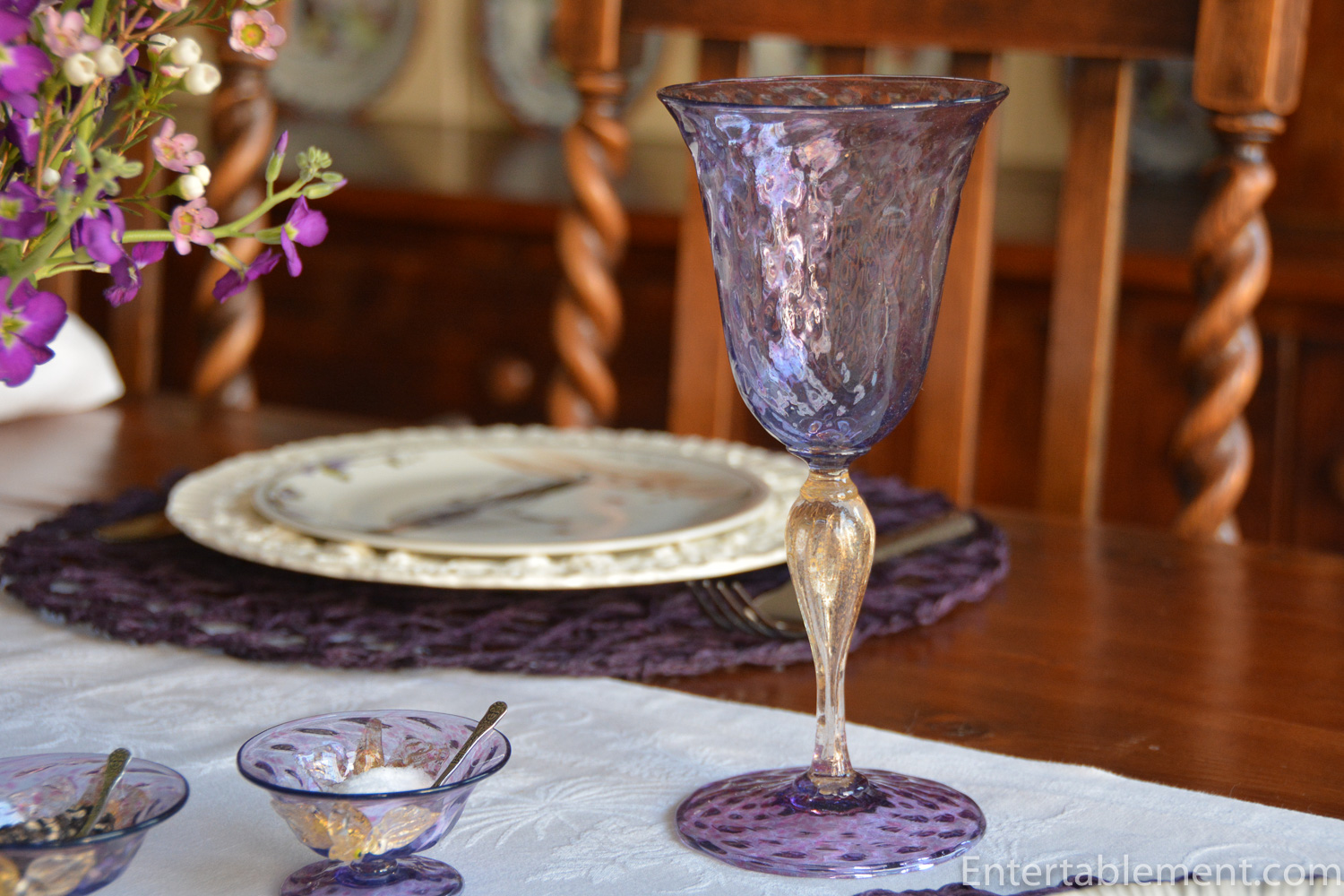

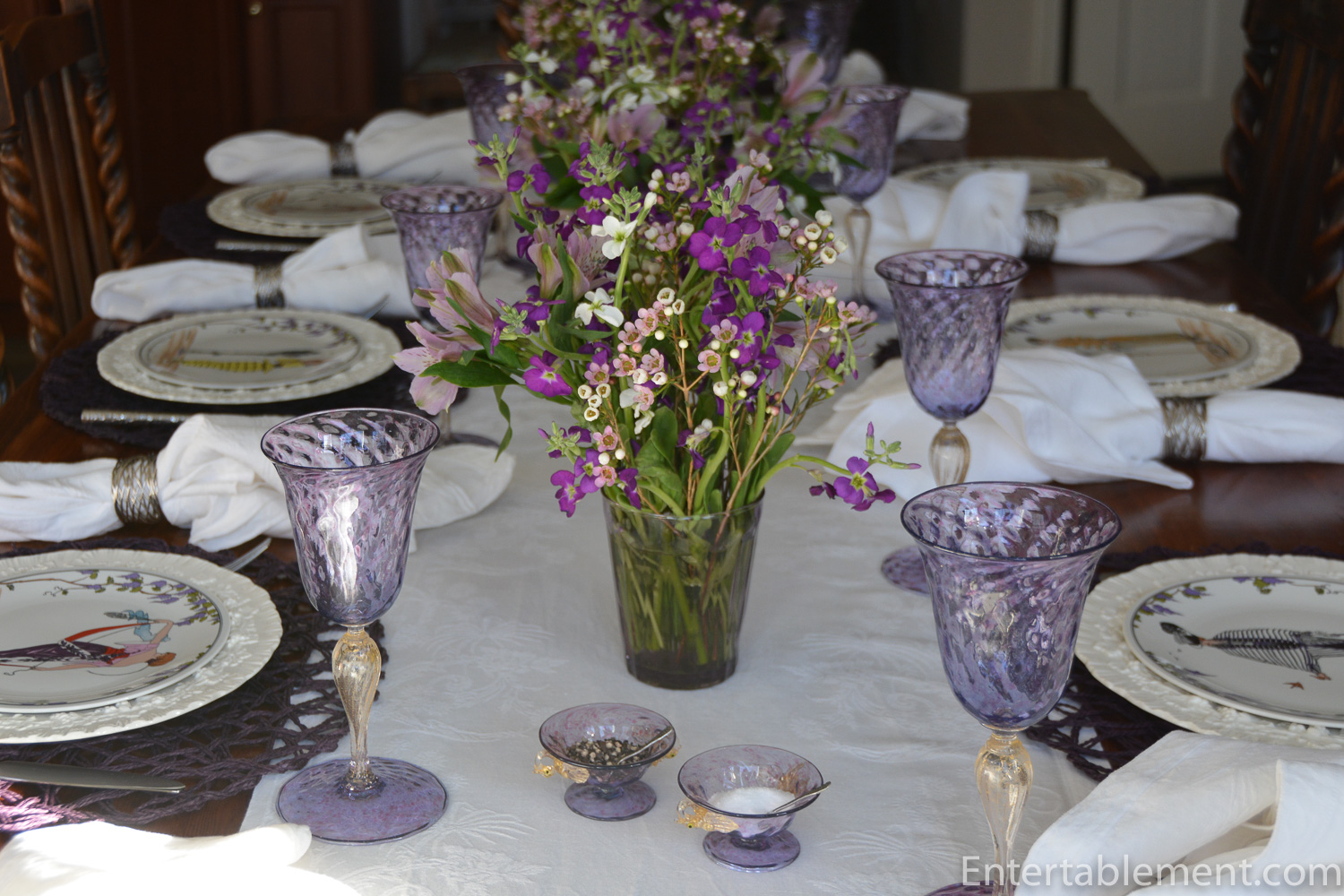


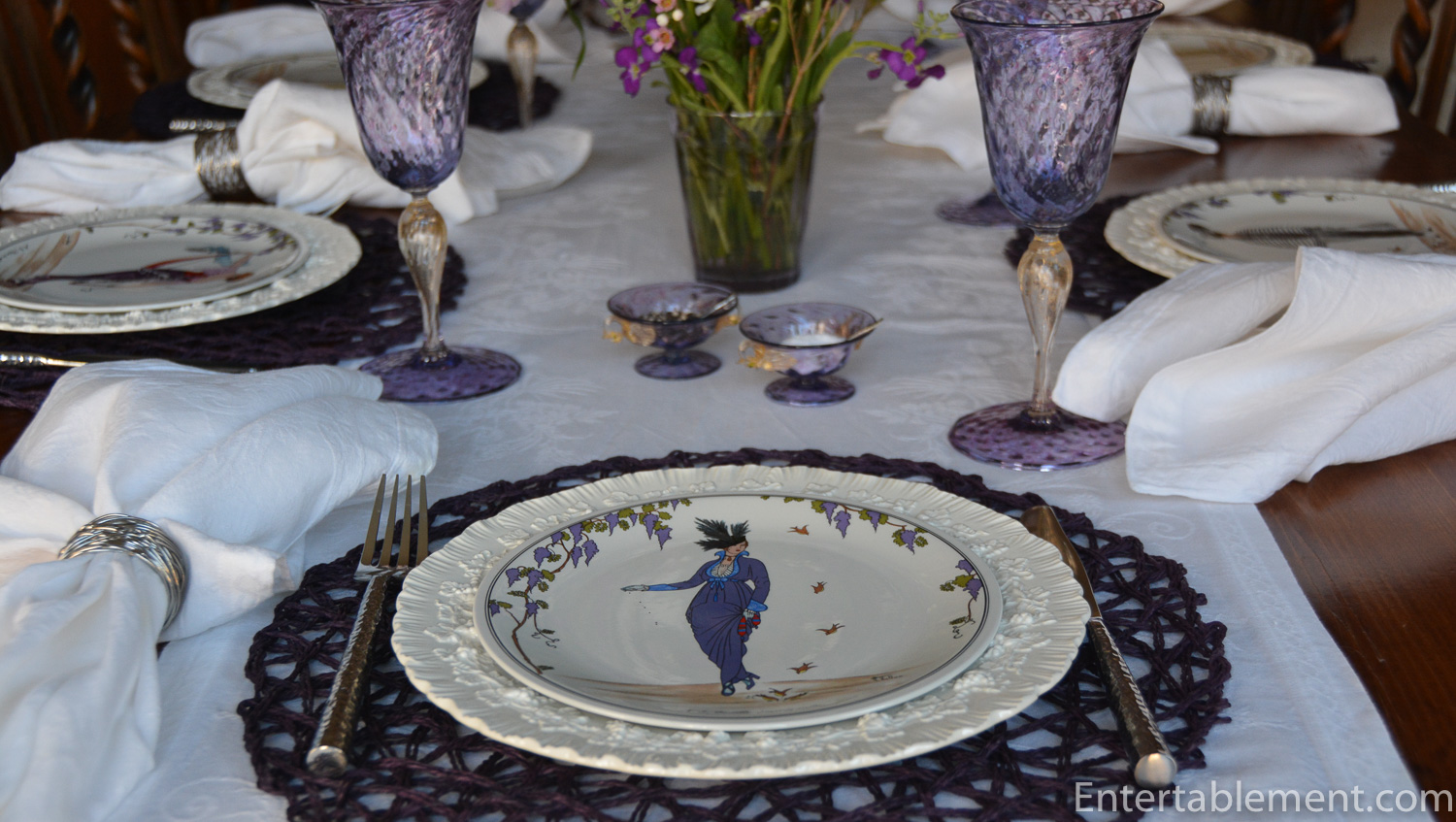

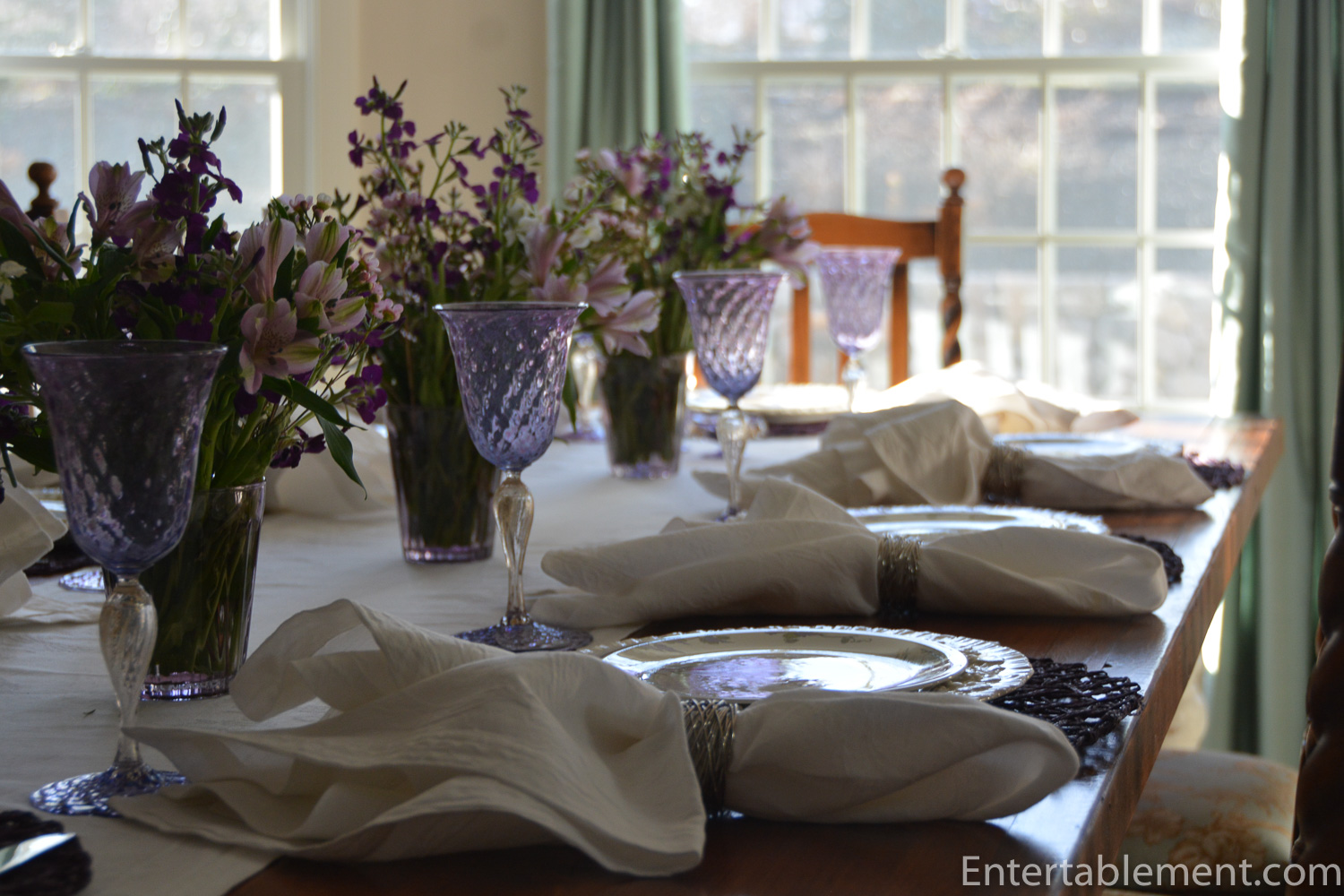

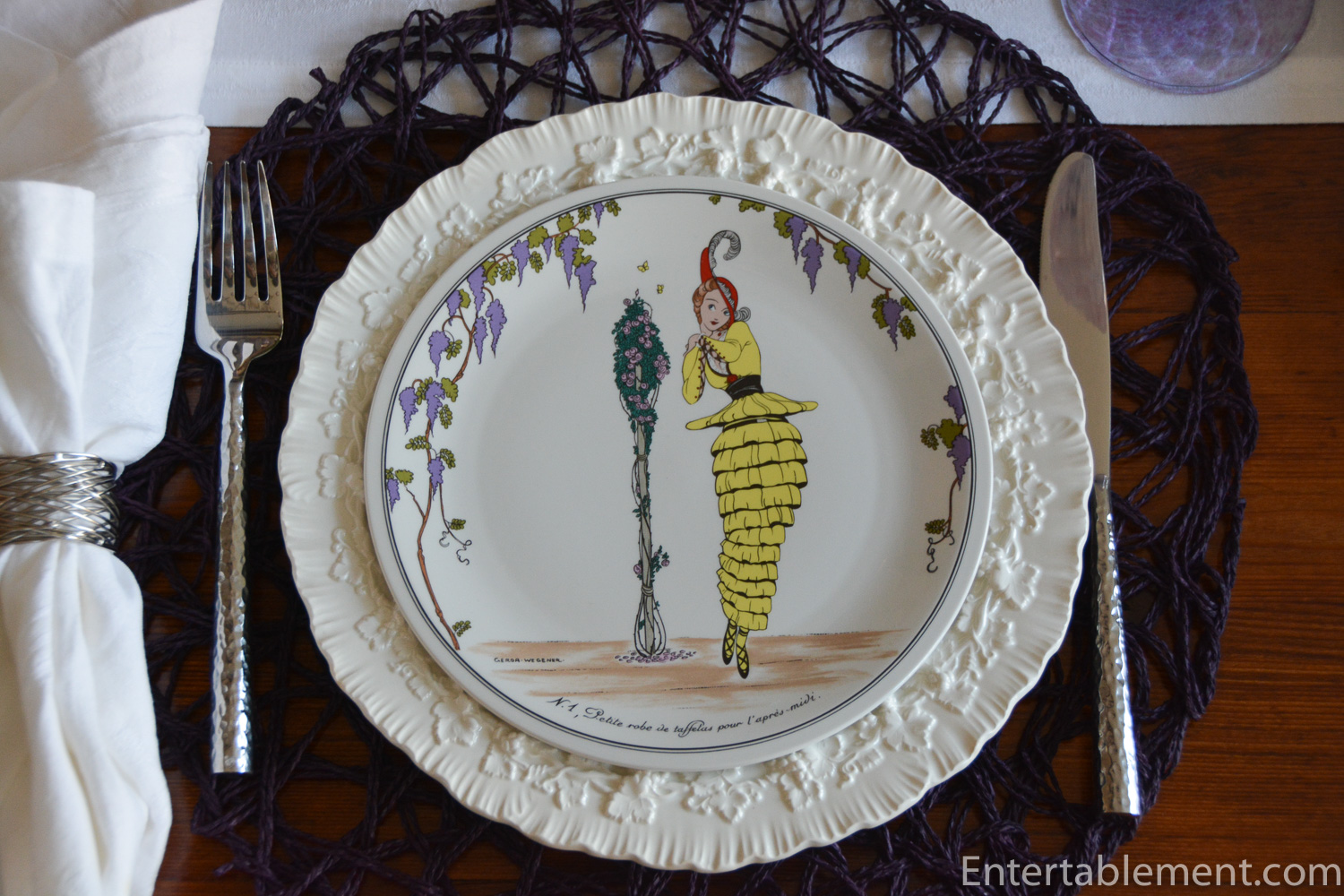
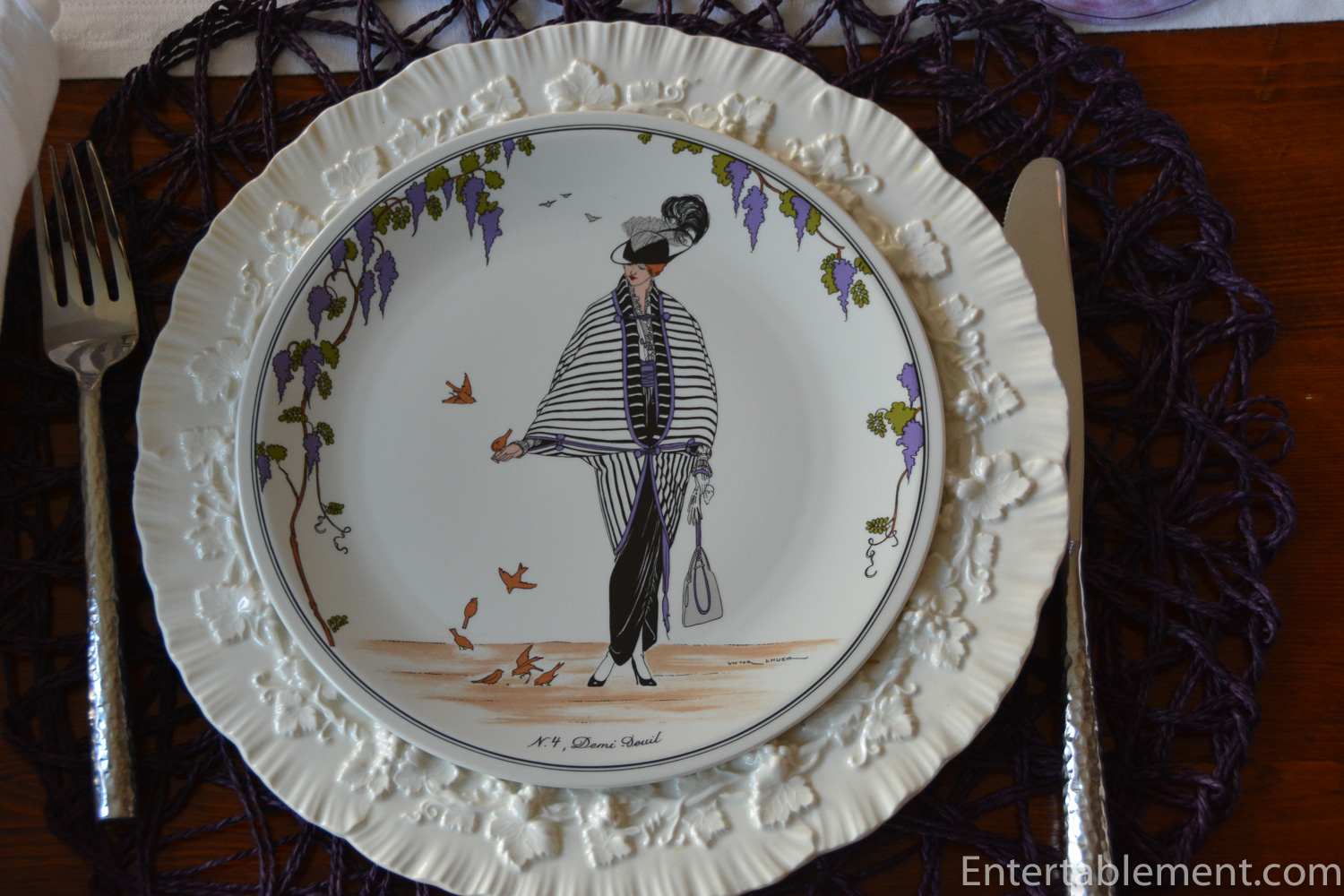

Helen,
You have managed to push all the right buttons with this one!
I particularly like the pairing of the textured placemats with the dinner plates,
The lilac stemware and salt cellars are a perfect match and the understated lilac tumblers highlight the flowers so well.
Brava!!
I do have the perfect purse for the black & white striped ensemble ; )
Well, we must think about having that ladies’ lunch then! So glad you liked the table, Kathi 🙂 Your artist’s eye is always keen and your observations are much appreciated.
Oh, my goodness! I can’t even pick a favorite! They’re ALL gorgeous! I especially like the goblets you chose. Those, along with the floral arrangements down the center, really complement the fabulous plate design!
Aren’t they fun, Alycia? I later determined that the tea/coffee/mugs have still different ladies on them, so stay tuned for a reprisal with beverages 🙂 Thanks so much for visiting and commenting. Hope all is well with you!
You have outdone yourself Helen – on the post content (so entertaining – who knew?), the scrumptious photos and the beautifully set table! Maybe one of my all time favorites (I think I may have said that a few times :-))
So glad you like it, Mary! Such fun plates, no? Who can resist elegant ladies in period costume?
Beautiful table ! V&B plates are gorgeous, I like them all, can pick a favorite. The chargers are very pretty too. Everything is so elegant and lovely, as the Venetian stemware, color and all.
I just posted my etch Venetian stems too.
Thank you for sharing some history on V&B. Next trip somewhere I will buy a set of china.
Fabby
I think the goblets and open salts are my favorite things on this table, but the plates are darling, too.
I’m with you on the goblets and salts. That amethyst is yummy!